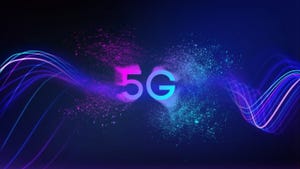Vodafone pitches LTE-M for low power and low data IoTVodafone pitches LTE-M for low power and low data IoT
Vodafone has started offering Long Term Evolution for Machines services, described as an alternative way of doing IoT for low-powered, low-data use cases.
August 1, 2024

LTE-M – which can also be called CAT-M – is a Low Powered, Wide Area Network (LPWAN) technology, designed for IoT services that are not connected to mains electricity and only transmit small amounts of data, explains Vodafone.
The signal travels further than 4G and 5G networks, but it is also designed to preserve battery life of the connected devices themselves. LPWAN technology can allow IoT devices to operate for up to 10 years on a single battery charge, apparently.
LTE-M can provide ‘continuous connectivity and low latency services in some scenarios, but only to facilitate small data batches.’
This is presented in contrast to 4G and 5G powered IoT products, which require high data throughput, constant connectivity and low latency, while LTE-M and narrow band technology (another LPWAN based connectivity type Vodafone has been a strong proponent of in the past) are designed for low data throughput and non-time sensitive use cases.
The differences between LTE-M and NB-IoT meanwhile are described in terms of average download/upload speeds - 300 kbps for the former and 20 kbps for the latter. Practically, NB-IoT is optimised for difficult to reach locations and batch data upload, for example in underground water pipes or smart meters in basements, while LTE-M is about more mobile use cases such as asset tracking, wearable devices, and event-based connectivity, says Vodafone.
So all in all Vodafone is offering three types of IoT supporting connectivity dependent on the scenario, which it categorises as this:

“When you have a data-led business, decisions are driven by insight not by assumption. IoT has the potential to revolutionise business, but we must make it accessible to all,” said Nick Gliddon, Business Director, Vodafone UK. “The power of LTE-M is the ability to choose the right tools for the right job. 5G might be the right choice for some IoT use cases, whereas LTE-M might be better for others. By enabling LTE-M to sit alongside 4G, 5G and NB-IoT, we are providing a technology-agnostic solution for customers. This is about picking the right solution, at the right price point.”
Vodafone been offering NB-IOT for years, and has been an evangelist for it for an even longer time, and has more recently made progress in LTE-M networks as well.
It is pitching one of the benefits of using something other than 4G or 5G when setting up an IoT deployment as affordability, and that in some cases 5G might simply be overkill. As it puts it: “The advantages of 4G and 5G technology might not be relevant for some use cases, therefore customers are paying for constant connectivity and high data throughput unnecessarily.”
Not over doing it with connectivity if the job doesn’t require it seems to be a reasonable position to take, certainly in terms of the customer’s wallet. But from a wider industry standpoint, it’s worth noting the emphasis today on what IoT – and 5G – is for, compared to a few years ago at the apex of 5G hype.
Historically, one of the things put forward as to what 5G would bring to the table is that it would foster an explosion in IoT in all sorts of scenarios, from smart cities, autonomous driving, industry 4.0, farming 4.0 etc. The hoards of data that could be gathered and analysed from hooking up everything to low latency, high-capacity mobile networks would allow for all sorts of real-time analytical processes to inform smart decision making as well, so went the story.
It's interesting to note from Voda’s graph that there are only two IoT use cases it suggests 5G would be better for than LTE-M, NB-IoT or 4G – smart grid automation and autonomous vehicles. The latter it has to be said is yet to make huge strides into real-world application.
Perhaps this ‘right tools for the job’ position is indeed a more accurate, sober picture of what underlying connectivity is needed to hook up all sorts of static and mobile objects to a network, for whatever purpose. But it is worth noticing there seems now to be less of an emphasis on 5G as the technology for which IoT it is filtered through, and the contrast between the initial marketing promises and the practical situation on the ground in mid-2024.
About the Author
You May Also Like










.png?width=300&auto=webp&quality=80&disable=upscale)


_1.jpg?width=300&auto=webp&quality=80&disable=upscale)